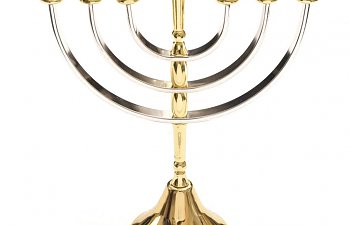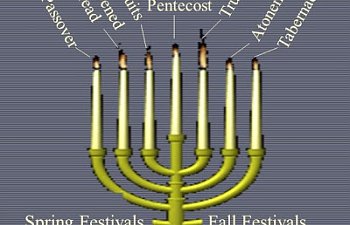A few days ago, I was dwelling on a fascinating concept sparked by John 7, in which Jesus shows up secretly / unexpectedly in the midst of the Feast of Tabernacles:
"But when the Jewish Festival of Tabernacles was near, Jesus’ brothers said to him, “Leave Galilee and go to Judea, so that your disciples there may see the works you do.' . . . Not until halfway through the festival did Jesus go up to the temple courts and begin to teach."
His disciples tried to convince Him to go with them, but Jesus decided to wait because His "time had not yet come." Perhaps it wasn't His time to be revealed publicly in glory, so He went in secret. But, the fact Yeshua showed up in the midst of the feast is what caught my attention.
I find it interesting that the feast of Unleavened Bread and Tabernacles are both a week long. This also has parallels to the week of creation (the anniversary of which we're in right now). I do believe since the first and last of the three harvest festivals are 7 days long, that Pentecost / Shavuot would also be a week long (it is referred to as the feast of weeks after all). However, that's a topic best reserved for another time and post. I wonder if this pattern of Jesus showing up unexpectedly in the midst of the feast repeats itself in others ways, showing God's sovereignty?
Going back to the week of creation, I noticed that God created the sun, moon and stars on the 4th day - in the mist of creation week. The movement of these bodies also enabled us to keep track of time. Isn't it also intriguing how Jesus's first advent occurred in what is believed to be the 4,000th year of mankind? Jesus' death and resurrection became the very reference point by which we base our calendar years, similar to how God established time on day 4. As a side note, Jesus was also crucified on a "4th day", as it was the day after the three days of inspection. Moses instructed the Jewish people to take in a lamb and inspect it for 3 days, and then to sacrifice it the next day (Passover).
Other parallels I've noticed that repeat this pattern include the Enoch Calendar, the 7-year Great Tribulation and the symbol of the Menorah. There is a lot of debate regarding conflicting calendars, all of which are claimed to be the true calendar God uses to dictate time, seasons and holidays. My theory on which calendar is actually the correct one is also best kept for another post, as its irrelevant, but the Enoch Calendar is unique in that it establishes the start of the week (and year) on Wednesday, the day the sun - and thus time - was created.
The Bible indicates that there will be a future period of 7 years (or a week of years) of intense testing of mankind. This is known as the Great Tribulation, or the 70th week of Daniel, initiated by the confirming of a 7-year covenant. There are others who disagree with my interpretation, but this is based on my understanding. Scripture mentions an anti-Christ figure breaking his covenant right in the midst of it, and bringing an end to the traditional animal sacrifice (Daniel 9:27). This "abomination" is meant to be a mockery of Jesus who established a new covenant in the midst of the 7,000 years of mankind (around the 4,000th year), that did away with animal sacrifices. Again, the "midst of the feast / week" pattern reemerges.
The 7-branch menorah lamp used in Israel features one branch that is higher than the rest - the center-most branch known as the "servant candle". This particular candle is used to light the other candles. Although, some menorahs do feature 9 branches (for celebrating Hanukkah), or have all branches at the same level. In scripture, a 7-branch lamp is also referred to a couple times, i.e. Exodus 25:36-37

I see this as yet another revealing of this pattern God has established. It's also interesting in that the 7 feast days of Israel are sometimes overlaid upon the picture of the menorah, in which each candle represents a holiday / feast day.

Notice how Pentecost would be above the 4th / middle candle, in the "midst" of the other candles. Pentecost is unique in that it is when the Holy Spirit was given (revealed in tongues of fire, like candles). I guess in a way, Pentecost brings "light" to the other feasts, just like how the Holy Spirit brings revelation regarding the things of God.
Just my personal musings and study. But, I'm sure this pattern continues even further.
References:
What was the purpose of "keeping" the Paschal lamb for four days?
Enoch Calendar | KHAI-YASHUA
